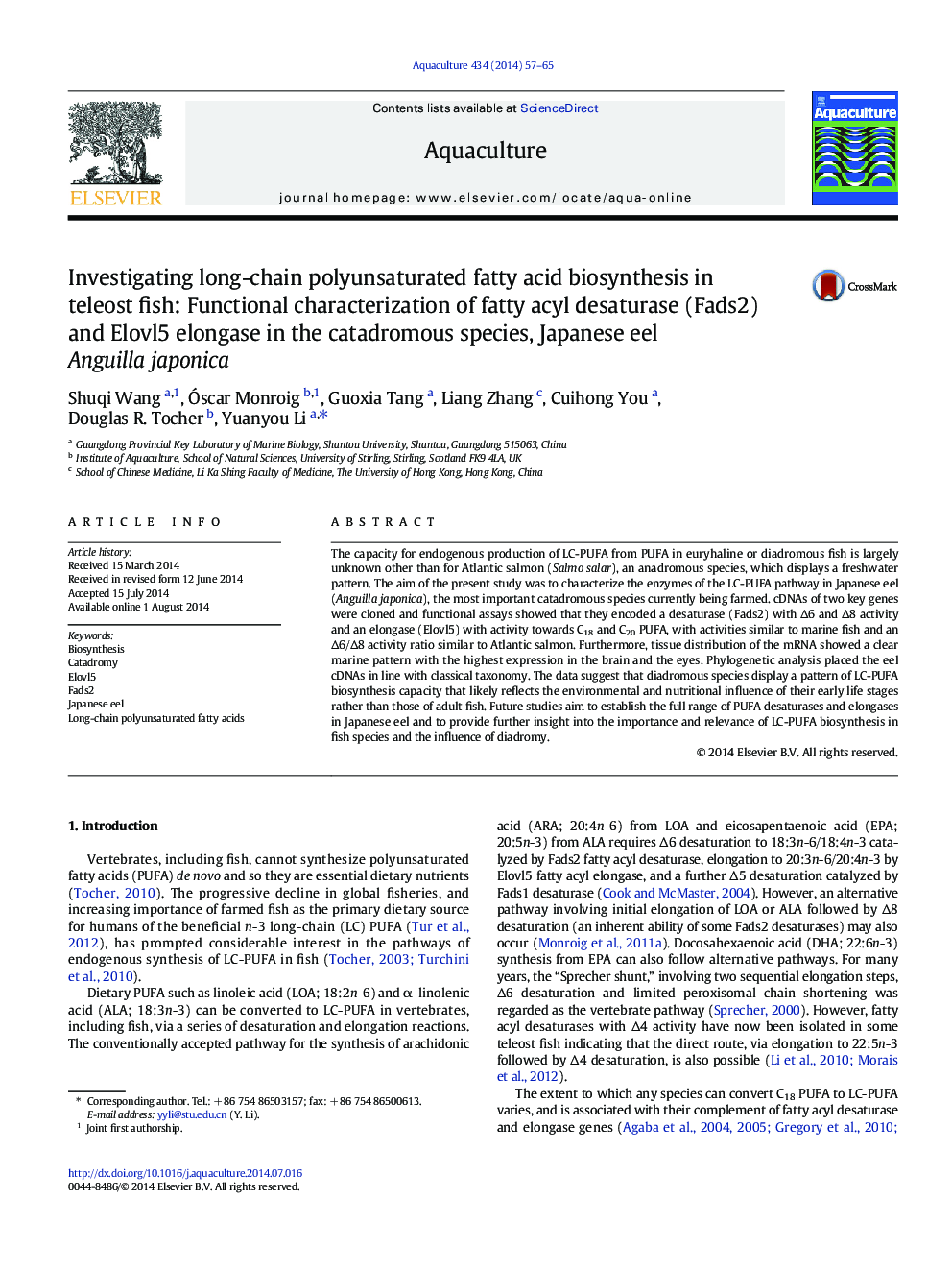| Article ID | Journal | Published Year | Pages | File Type |
|---|---|---|---|---|
| 2421706 | Aquaculture | 2014 | 9 Pages |
•Japanese eel's LC-PUFA biosynthesis showed a clear marine pattern.•The eel Fad2 had both Δ6 and Δ8 activities, but no Δ5 and Δ4 activities.•The eel Elovl5 had elongation activity for both C18 and C20, but not for C22 PUFA.•This is the first report characterizing the LC-PUFA pathway in a catadromous species.
The capacity for endogenous production of LC-PUFA from PUFA in euryhaline or diadromous fish is largely unknown other than for Atlantic salmon (Salmo salar), an anadromous species, which displays a freshwater pattern. The aim of the present study was to characterize the enzymes of the LC-PUFA pathway in Japanese eel (Anguilla japonica), the most important catadromous species currently being farmed. cDNAs of two key genes were cloned and functional assays showed that they encoded a desaturase (Fads2) with Δ6 and Δ8 activity and an elongase (Elovl5) with activity towards C18 and C20 PUFA, with activities similar to marine fish and an Δ6/Δ8 activity ratio similar to Atlantic salmon. Furthermore, tissue distribution of the mRNA showed a clear marine pattern with the highest expression in the brain and the eyes. Phylogenetic analysis placed the eel cDNAs in line with classical taxonomy. The data suggest that diadromous species display a pattern of LC-PUFA biosynthesis capacity that likely reflects the environmental and nutritional influence of their early life stages rather than those of adult fish. Future studies aim to establish the full range of PUFA desaturases and elongases in Japanese eel and to provide further insight into the importance and relevance of LC-PUFA biosynthesis in fish species and the influence of diadromy.
